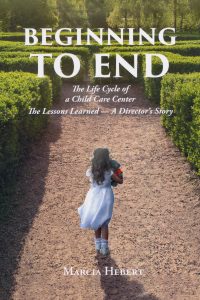When we design our early childhood classrooms, we essentially become the director of a Broadway production. We have an empty stage—filled with possibility. We build the set (walls, flooring, doors, windows). We paint the backdrop scenery. We add the furniture and structures and place each—just so. We add the props (all of the smaller objects that will be used). And when all of this has been done, the actors arrive and perform their play within this space—designed specifically for them.
As teachers, we set the stage every day for our children to act upon it. Our stage, our classroom environment, will determine the outcome of our children’s play. So, we put a lot of thought into our design in order to create successful outcomes for the children. In my book, Beginning to End: The Life Cycle of a Child Care Center—A Director’s Story, I wrote in great detail about the key elements in an early childhood environment. The impact of color, of lighting; the impact of softness, of texture, of natural materials; the impact of display, of placement, of presentation; the impact of order, of organization, of clutter vs. calm; must all be attended to as we “set the stage” for optimal play and discovering, imagining, exploring, problem solving, strategizing, creating—down to the smallest detail.
The materials we select should be attractive, inviting, relevant to the children’s experiences and cultures, and challenging, but not frustrating—that is, developmentally appropriate.
In general, at the beginning of the year, less is better. Too many new materials at once can overwhelm the children. We start by allowing time for them to learn how to use and care for the materials. Take the time to do this in September and keep reinforcing. Your efforts will pay off later. To minimize sharing problems, put out duplicates of basic materials rather than a large assortment of individual, different items.
- Store materials that go together in the same place (pegs with pegboards, collage materials with paper and glue, cars with blocks).
- Use containers for small pieces.
- Use pegs for hanging clothes or other things that need hanging.
- Display materials so that children can see them easily.
- Place materials and toys on low shelves at the children’s eye level.
- Put books on shelves with covers facing out.
Everything in the classroom should have a designate space. All children benefit from this kind of order. When children know where things are and how and why they are grouped, they can work independently and constructively. And, they can participate meaningfully in cleanup and in caring for the classroom.
- To show children that everything has a place, label storage places. In the 2’s classroom, use only pictures for labeling. In the preschool classroom, use pictures and words—use upper and lower case, as in “Blocks”.
- Display the children’s work prominently—at their eye level, beautifully, and framed.
- Keep displays simple. When the walls and all available spaces are filled with posters and artwork, children (and visitors) are overwhelmed and find it difficult to focus on any one thing.
- Change displays regularly.
- Where to display? On walls, bulletin boards, columns, tops and backs of shelves, a clothesline with pins, a fishnet, easels, room dividers—so the children can see and touch the display.
An orderly classroom requires storage space. Think in terms of three different types of storage: open storage for materials accessible to the children; secure storage for materials you want to control; and personal storage for children and adults. Use neutral colored storage containers that simply blend into the woodwork.
And you will know that your environment is working well if the children:
- make choices and select activities on their own,
- use materials appropriately and creatively,
- stay involved with an activity for a sustained period of time,
- experience success when they play, and
- help take care of the materials.
And for details and ideas about creating magic within your environments for infants, toddlers, twos, and preschoolers, take a look at my book, Beginning to End: The Life Cycle of a Child Care Center—A Director’s Story, available on Amazon.com.

